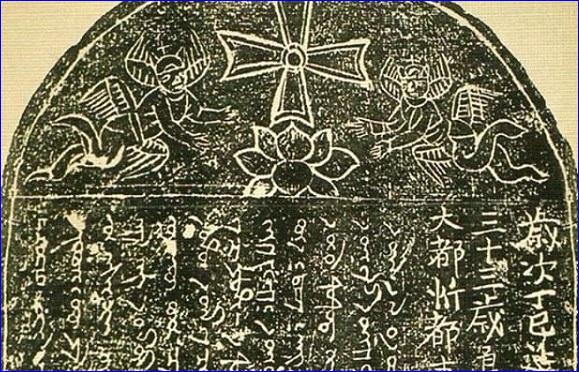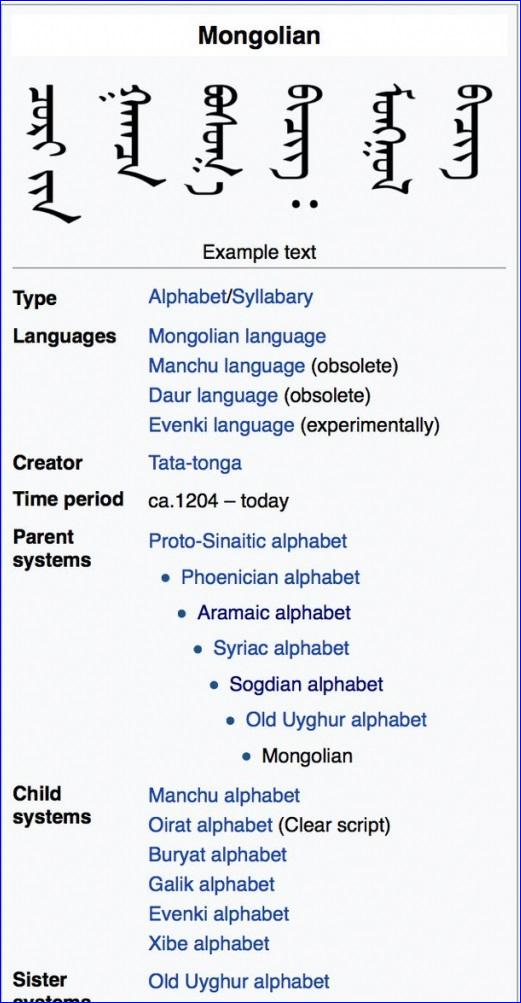


The Times of Australia reports that the Mongolian government will take transitional measures to prepare for the full restoration of the traditional alphabet. It will start with using traditional Mongolian in the "electronic environment". Scientific, literary and state registry offices were asked to establish a system for Mongolian names. Media are required to publish in both scripts until 2024, and schools must increase learning time to study the writing.
Related: By Foot To China: Mission of The Church of the East, to 1400
The difference in alphabets has split the Mongolian people, with three million living in Mongolia and writing in Cyrillic, and nearly six million in Inner Mongolia, a Chinese region where the traditional script written in vertical lines is used.
Related: The Monks of Kublai Khan
Mongolian (Uighur) script (www.linguamongolia.com): Over the last 800 years Mongolian has been written with a variety of different scripts, but the first of those and the most enduring is the one which the Mongols borrowed from the Uighurs. The Uighurs themselves had acquired this script as a result of their contacts with the Sogdian's, an Old Iranian people who had in turn borrowed their script from Syriac. Those who are already familiar with Syriac will easily see the similarities. However, where Syriac and Sogdian were written horizontally right to left, Uighur and Mongolian are written vertically left to right.

According to Mongol tradition, this script was instituted at the order of Chinggis Qaghan in 1204. Many attempts were made to supplant it, with various scripts, mainly under the influence of Tibetan Buddhism and several scripts were adopted as variations of Tibetan and Sanskrit. The old script was eventually abandoned in the former Mongolian People's Republic where, in 1941, it was replaced by a variation of the Cyrillic alphabet. This loss of status has extremely weakened its position in Outer Mongolia, where generations have now grown up knowing nothing but Cyrillic; there have been attempts to revive its use, but these have not been overly successful. However, it is still used by a relatively large section of the Mongolians living in the Inner Mongolia autonomous region of China, where the script can be found everywhere including bilingual road signs and on almost every storefront and fast-food outlet.

or register to post a comment.